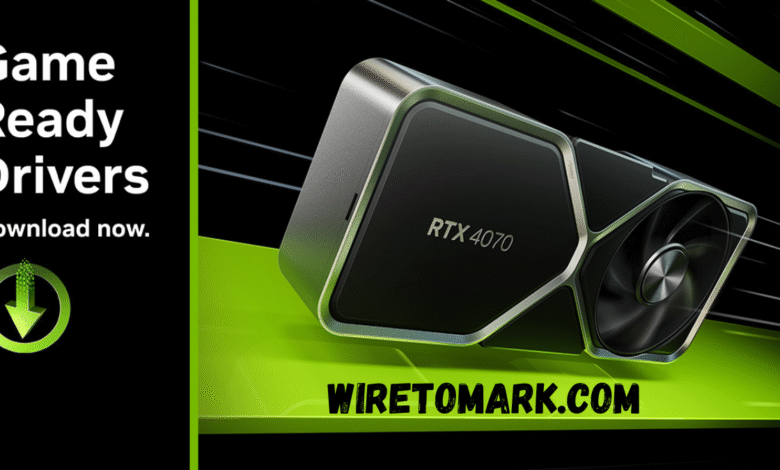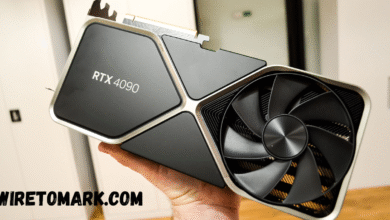Understanding Nvidia Drivers The Core of a Smooth Gaming

When people talk about powerful graphics cards, the first brand that often comes to mind is Nvidia. Behind every card, though, there’s something less flashy but equally important: Nvidia drivers. These little pieces of software act like a translator between your operating system and your graphics hardware, ensuring that everything runs smoothly. Without them, even the most powerful GPU wouldn’t perform as expected.
Think of them as the unsung heroes of your computer. Whether you’re playing a new game, editing videos, or even browsing, Nvidia drivers play a role in how everything looks and feels. A properly updated driver can be the difference between a smooth experience and endless frustration with glitches or crashes.
Why Nvidia Drivers Are Essential
One of the biggest reasons Nvidia drivers matter is because they’re constantly updated to keep up with the latest technology. Each new release of a game or creative software often brings new demands on the graphics card. The driver updates act as a bridge, helping your GPU handle those demands without slowing down or breaking. This makes them absolutely critical for gamers and professionals alike.
Another important role of these drivers is optimization. Nvidia engineers test and fine-tune the drivers so they can squeeze every ounce of performance from your hardware. This means you can enjoy higher frame rates, sharper visuals, and even energy savings on laptops—all thanks to drivers that are written with precision.
How Nvidia Drivers Improve Gaming Performance
If you’re a gamer, you’ve probably noticed that some updates to Nvidia drivers are released right alongside major game launches. That’s no coincidence. Nvidia works directly with game developers to optimize drivers before the game hits the market. This ensures players get the best possible performance on day one, rather than waiting months for fixes.
But gaming isn’t just about raw speed. Drivers also introduce features like Nvidia Reflex, DLSS, and advanced ray tracing support. These aren’t just buzzwords—they’re tools built into the drivers that enhance gameplay in a way that raw hardware alone couldn’t achieve. For competitive gamers, shaving milliseconds off input lag with updated drivers can be the difference between victory and defeat.
The Role of Nvidia Drivers in Creative Work
Gamers aren’t the only ones who rely heavily on Nvidia drivers. Content creators—video editors, 3D modelers, and graphic designers—depend on them as well. Professional-grade drivers, sometimes referred to as “Studio Drivers,” are optimized specifically for creative applications. These drivers ensure tools like Adobe Premiere Pro, Blender, or DaVinci Resolve run with maximum stability and performance.
Imagine rendering a high-resolution video only to have your system crash halfway through. That’s where the stability of Nvidia drivers comes in. They are tested extensively with creative software so professionals can focus on their craft without worrying about compatibility or random errors. For many, these drivers are the difference between meeting deadlines or missing them.
Keeping Nvidia Drivers Updated
Many people don’t realize how important it is to keep their drivers updated. Unlike some software that you can ignore for months, Nvidia drivers should be refreshed regularly to keep everything running at peak performance. New versions don’t just fix bugs—they often improve security, stability, and compatibility with the latest apps and games.
Thankfully, Nvidia makes this process simple through its GeForce Experience software. With just a few clicks, you can download and install the latest update, often without even needing to restart your system. For those who prefer more control, manual downloads are always available directly through Nvidia’s official platform.
Common Issues Related to Nvidia Drivers
Even though Nvidia drivers are carefully engineered, they’re not immune to problems. Sometimes, after a new update, users might experience issues like crashes, flickering screens, or performance drops. These are usually temporary and resolved quickly with hotfixes, but they can be frustrating.
The good news is that most issues are easily fixable. Rolling back to a previous version or performing a clean installation usually resolves conflicts. Nvidia’s support community and official forums are also filled with solutions from both engineers and experienced users. This makes troubleshooting more straightforward than many expect.
Balancing Performance and Stability with Nvidia Drivers

While frequent updates are important, it’s not always wise to install them immediately on release day. Some users, especially professionals working with critical projects, prefer to wait and see if any issues pop up before updating. This balance between performance and stability is one of the most common debates around Nvidia drivers.
For gamers who want the newest features and optimizations, jumping on updates right away makes sense. On the other hand, for creative professionals, stability often matters more than being on the cutting edge. That’s why Nvidia offers different versions, like Game Ready Drivers for gamers and Studio Drivers for creators.
The Future of Nvidia Drivers
Looking ahead, Nvidia drivers will only become more advanced. With artificial intelligence being integrated into more aspects of computing, drivers are evolving to include smarter optimizations. Features like AI-powered upscaling or intelligent frame rendering rely directly on driver-level innovations.
There’s also a shift toward making updates lighter and less intrusive. Nvidia is working to ensure that the installation process is smooth and that drivers don’t hog unnecessary system resources. In the near future, we might even see drivers that adapt dynamically to the workload without requiring manual updates at all.
FAQs About Nvidia Drivers
Q: Do I really need to update Nvidia drivers regularly?
Yes, updating your drivers is important to keep your system secure, stable, and optimized for the latest games or applications. Even if you don’t game, updates often include fixes for bugs and performance improvements.
Q: What’s the difference between Game Ready Drivers and Studio Drivers?
Game Ready Drivers are designed for gamers, offering optimizations for new releases. Studio Drivers, on the other hand, focus on stability and performance in creative software. Choosing the right one depends on your main use case.
Q: Can outdated drivers cause system crashes?
Absolutely. Outdated drivers can lead to crashes, graphical glitches, or poor performance. Keeping them updated helps reduce these risks and ensures your hardware runs smoothly.
Q: Is GeForce Experience necessary to update Nvidia drivers?
Not at all. While GeForce Experience makes it easier, you can also manually download the latest driver from Nvidia’s official website if you prefer more control.
Q: Do Nvidia drivers affect laptop performance as much as desktops?
Yes, and sometimes even more so. Laptops rely heavily on efficient drivers to balance performance with battery life, making updates crucial for portable systems.



